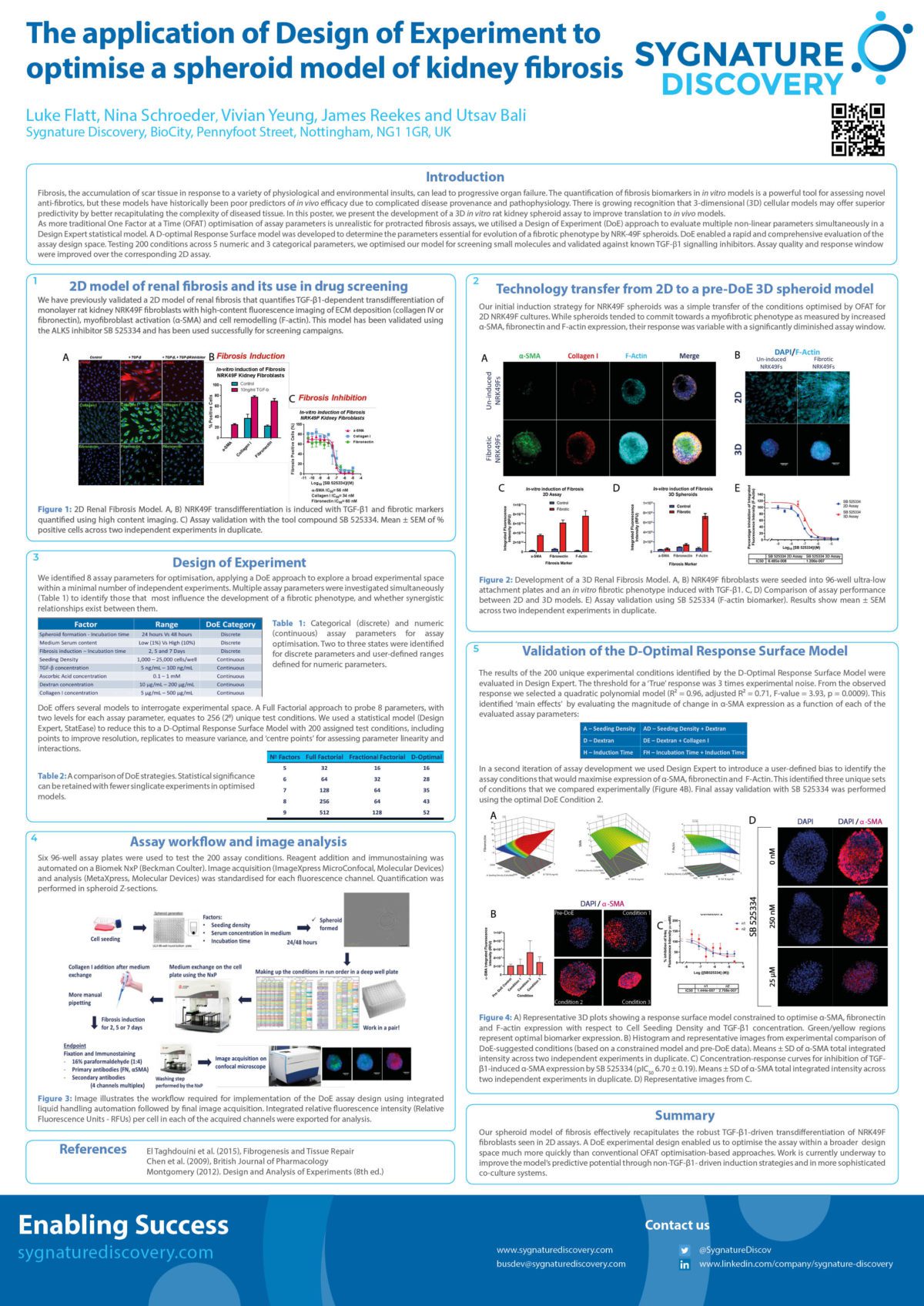Optimising Kidney Fibrosis Spheroid Model using Design of Experiment (DoE)
Fibrosis, the accumulation of scar tissue in response to a variety of physiological and environmental insults, can lead to progressive organ failure. Despite the usefulness of fibrosis biomarkers in in vitro models to assess novel anti-fibrotics, these models have historically been poor predictors of in vivo efficacy due to complicated disease provenance and pathophysiology. However, there is growing recognition that 3-dimensional (3D) cellular models may offer superior predictivity by better recapitulating the complexity of diseased tissue. In this poster, we present the development of a 3D in vitro rat kidney spheroid assay to improve translation to in vivo models.
Utilising Design of Experiment (DoE) for Optimising Fibrosis Assays: To address the challenge of optimising fibrosis assays, the traditional One Factor at a Time (OFAT) optimisation of assay parameters is unrealistic for protracted fibrosis assays. Instead, we utilised a Design of Experiment (DoE) approach to evaluate multiple non-linear parameters simultaneously in a Design Expert statistical model. A D-optimal Response Surface model was developed to determine the parameters essential for evolution of a fibrotic phenotype by NRK-49F spheroids. DoE enabled a rapid and comprehensive evaluation of the assay design space. Testing 200 conditions across 5 numeric and 3 categorical parameters, we optimised our model for screening small molecules and validated against known TGF-b1 signalling inhibitors. Assay quality and response window were improved over the corresponding 2D assay.
Conclusion: In conclusion, the development and optimisation of a 3D in vitro rat kidney spheroid assay using the DoE approach has improved the predictivity and relevance of fibrosis models. This innovative assay presents a promising platform for screening potential anti-fibrotic compounds, accelerating fibrosis research and contributing to improved treatments for progressive organ failure caused by fibrosis.

